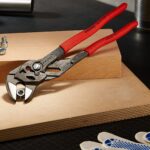Keeping your mini split system running efficiently is crucial for maintaining a comfortable home environment. One essential maintenance task is vacuuming the system, which helps remove dust and debris that can hinder performance. If you’re unsure how to tackle this task, don’t worry; it’s simpler than it sounds.
Understanding Mini Split Systems
Mini split systems provide efficient heating and cooling solutions for homes. They consist of an outdoor compressor unit and one or more indoor air handling units, which work together to create a comfortable environment.
What Is a Mini Split System?
A mini split system consists of two main components: the outdoor unit and the indoor unit. The outdoor unit houses the compressor and condenser, while the indoor unit contains the evaporator coil and air handler. Mini splits operate without ductwork, making them ideal for homes without existing HVAC systems or for improving air conditioning in specific areas, such as additions. They use refrigerant to transfer heat and can both heat and cool depending on your needs.
Importance of Regular Maintenance
Regular maintenance ensures your mini split system operates efficiently and prolongs its lifespan. Neglecting upkeep can lead to decreased performance, higher energy bills, and potential system failures. By vacuuming the indoor and outdoor units, you eliminate dust and debris that accumulate over time. This process helps maintain optimal airflow, enhances energy efficiency, and improves indoor air quality. Regular maintenance also allows for early detection of issues, saving on costly repairs.
Tools Needed for Vacuuming a Mini Split
To effectively vacuum a mini split system, gather the right equipment and safety gear. Using these tools ensures a thorough, safe cleaning process.
Essential Equipment
- Vacuum Pump: A vacuum pump removes moisture and debris from the system. Choose a pump with a minimum capacity of 3 CFM for efficiency.
- Manifold Gauge Set: This tool monitors pressure in the refrigerant lines. Look for a set compatible with your mini split’s refrigerant type.
- Vacuum Hoses: Use hoses that fit securely with your vacuum pump and manifold gauge. Ensure they’re rated for refrigerant use.
- Cordless Handheld Vacuum: A cordless vacuum easily removes dust and debris from the indoor unit. Select one with adequate suction power.
- Soft Brushes: Brushes help clean delicate components without causing damage. Use a set designed for HVAC applications.
- Rags or Cloths: Microfiber cloths are ideal for wiping surfaces and collecting dust. Keep several on hand for thorough cleaning.
Safety Gear
- Safety Glasses: Protect your eyes from dust and debris during the vacuuming process. Choose glasses that meet ANSI Z87.1 standards.
- Gloves: Wear gloves to safeguard your hands from chemicals or sharp edges. Opt for rubber or nitrile gloves for best protection.
- Mask: A dust mask or respirator prevents inhalation of particles during cleaning. Use one compliant with NIOSH standards for optimal safety.
- Knee Pads: If you’re working on the floor, consider knee pads for comfort and protection while accessing the unit.
- Apron: Use a utility apron to keep your tools and cleaning supplies close at hand. Choose one with pockets for easy access.
Equipping yourself with these tools and safety gear ensures a successful vacuuming process for your mini split system.
Step-by-Step Guide on How to Vacuum a Mini Split
Follow these steps for a thorough vacuum process to maintain your mini split system effectively. Each stage ensures optimal performance and air quality.
Preparing the Workspace
- Clear the area around the indoor and outdoor units.
- Remove any furniture or obstacles that obstruct access.
- Lay down a drop cloth to catch debris and protect flooring.
- Gather all necessary tools and safety gear for efficiency.
Disconnecting the Power
- Locate the disconnect switch for your mini split system.
- Turn off the power at the disconnect switch or circuit breaker.
- Verify there’s no power using a multimeter to ensure safety.
Using the Vacuum Pump
- Connect the vacuum pump to the service ports using your manifold gauge set.
- Ensure all connections are tight to avoid leaks.
- Turn on the vacuum pump and let it run for 15-30 minutes to remove moisture and air.
- Observe the gauge to ensure it reaches a proper vacuum level (below 500 microns).
Recharging the System (if necessary)
- Check the refrigerant levels if the vacuuming process reveals low amounts.
- Connect the refrigerant cylinder to the manifold gauge set.
- Open the appropriate valves slowly to add refrigerant, following manufacturer specifications.
- Monitor the gauges to avoid overcharging while ensuring optimal refrigerant levels.
Common Mistakes to Avoid
Avoiding common mistakes during the vacuuming process ensures your mini split system operates efficiently. Be mindful of these pitfalls.
Neglecting Regular Maintenance
Neglecting maintenance leads to performance issues. Missing regular vacuuming can result in dust and debris accumulation, hindering airflow. Schedule vacuuming every three to six months to maintain air quality and system efficiency. Monitor the filters and clean them regularly to prevent blockages. Neglecting these tasks increases energy consumption and could cause system breakdowns.
Improper Vacuum Techniques
Improper techniques affect the vacuuming effectiveness. Using the wrong attachments can damage components. Always use soft brushes to prevent scratches on the indoor units. Ensure that the vacuum pump connects firmly to the service ports to avoid air leaks during operation. Running the pump for less than 15 minutes may not remove all moisture and air, so adjust the time as needed based on your system’s requirements. Confirm proper handling of refrigerant to avoid system issues.
Conclusion
Maintaining your mini split system through regular vacuuming is crucial for optimal performance and efficiency. By following the steps outlined in this guide you can ensure that your system runs smoothly and effectively. Remember to gather the right tools and safety gear before you start to make the process easier and safer.
Scheduling vacuuming every three to six months not only enhances airflow but also improves indoor air quality. By avoiding common mistakes and adhering to best practices you’ll prolong the lifespan of your mini split system while keeping energy costs in check. Taking these proactive steps will lead to a more comfortable home environment for you and your family.


